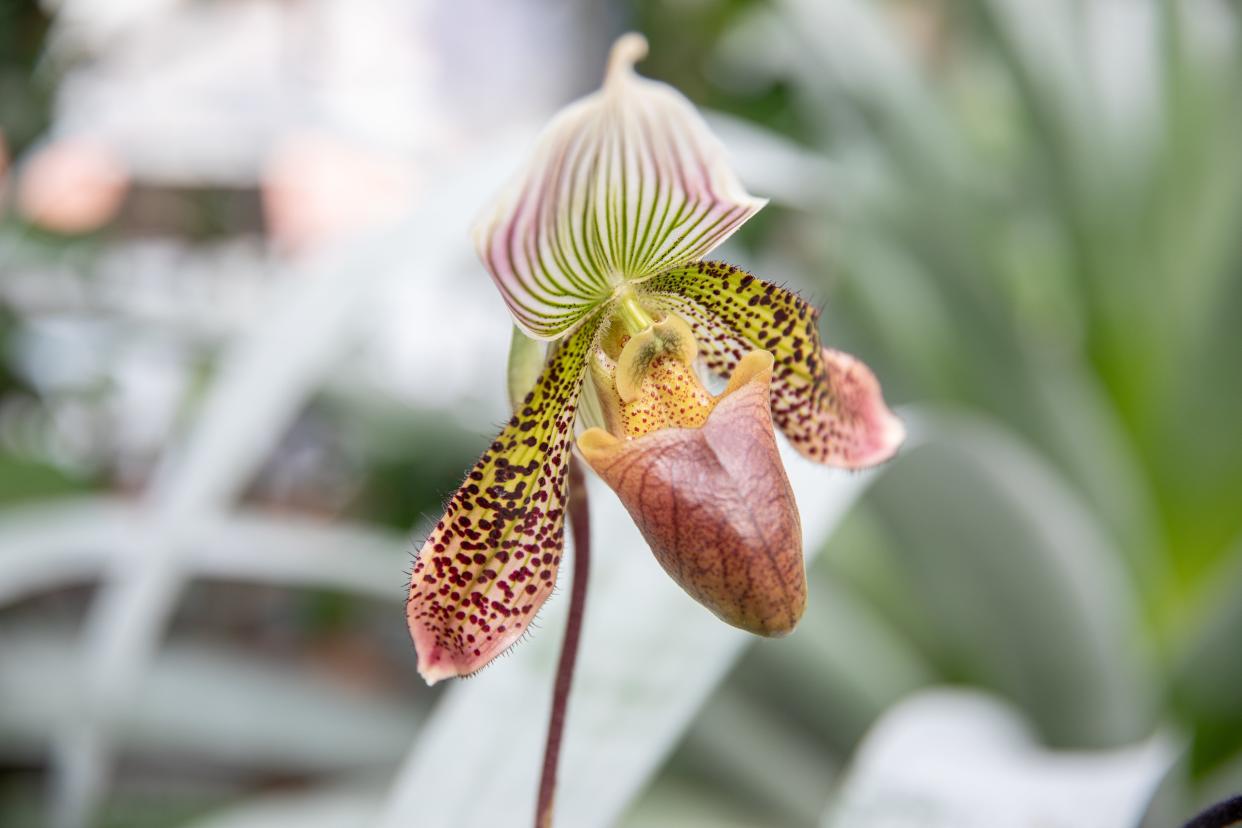Beautiful and fascinating, Orchids can grow almost anywhere ... including at home indoors

The orchid family is one of the largest flowering plant families in the world. Orchids can be found on every continent except Antarctica, from the steamy jungles of Asia to the dry deserts of Africa, to the temperate forests of New England. Orchids can live with their roots in the soil (terrestrial orchids) or grasping onto another plant (epiphytic orchids) or even growing on rocks (lithophytic orchids). Their flowers can be as tiny as a pin head or larger than your fist and they come in a rainbow of colors. Orchids have fascinated humans for hundreds, maybe even thousands of years because of their intricate beauty and unique forms.
My love of orchids started when I was a child. Growing up in South Florida, my dad had a collection of orchids that happily grew outdoors year-round under the shade of a tangelo tree. When I went to college in Gainesville, I grew my own collection of orchids outdoors where they soaked up the Florida humidity and daily rain during the summer. Once I moved farther north, I realized that I needed to drastically change my method of growing orchids. Now, living in New England, I have a small collection of about a dozen orchid plants at home and I must confess that I have killed more orchids than I successfully keep alive in recent years. However, I keep buying them and hoping for the best, and I still encourage others not to be afraid of growing orchids at home.
More Central Mass. Gardening: Ask a Horticulturist: Your Questions Answered
More Central Mass. Gardening: Beyond the vegetable garden: Edible native plants to discover this year
The key to growing orchids at home indoors is to learn about the plant and try to replicate its growing conditions from the wild. Proper watering is essential. It's easy to go wrong following what's referred to as the “ice cube method.” Contrary to popular belief, no orchid wants frozen water added it its pot. For growing information and guidance, I rely heavily on the American Orchid Society website for information. They have culture sheets on just about every orchid the home grower will get their hands on.
When I think about my favorite orchids, lady slippers are at the top of my list. Both the tropical (Paphiopedilum) and temperate (Cypripedium) lady slippers, which are native to our New England woodlands, fascinate me. They get their name from one of the petals, a pouch-like shape that resembles a ballet slipper. The pouch shape aids in pollination. Pollinators are attracted to the flower’s sweet scent and fall into the pouch, getting trapped for a bit and covered in pollen as they try to climb out. Most varieties of slipper orchids are terrestrial. When growing tropical lady slippers at home, think about the plants growing on the forest floor and provide a similar low light environment. These plants also like a moderately humid environment, which I create using a humidity tray of pebbles and water. The pebbles hold the plant pot above the water, so it doesn’t get water-logged, and as the water evaporates, humidity builds around the plant.
Another favorite of mine is the dancing lady orchid (Oncidium). The beautiful, ruffled flowers can look like a dress in motion. Some of these are very fragrant. The deep purple and white flowers of Oncidium "Sharry Baby" have the intoxicating smell of chocolate. Dancing lady orchids are light loving orchids that can live in 40-70% humidity.
I also love boat orchids (Cymbidium). They are cool growing, so they work well in indoor environments, provided you don’t keep your home too warm in winter. The large spikes of flowers are very impressive, and the large strappy leaves are interesting even when the plant isn’t blooming. Boat orchids prefer humidity around 50% and bright, indirect light.
Dendrobium orchids are perhaps the best option for growing indoors because they can tolerate the lowest humidity, though all orchids will benefit from a humidity tray or humidifier. Varieties can be deciduous or evergreen. The stems of dendrobium orchids are thick pseudobulbs that store water and nutrients and should not be cut after blooming.
With such a diverse plant family, I encourage home growers to try new species of orchids. Each home has a different environment to offer these fascinating plants, and they bring so much joy, especially this time of year when feeling eager for spring!
Gardening Central Mass. is written by New England Botanic Garden at Tower Hill CEO Grace Elton and Director of Horticulture Mark Richardson. Located on 171 acres in Boylston. New England Botanic Garden creates experiences with plants that inspire people and improve the world. Learn more at www.nebg.org. The column is published on the third Sunday of the month.
This article originally appeared on Telegram & Gazette: Central Mass. Gardening: Houseplant spotlight — demystifying orchids

